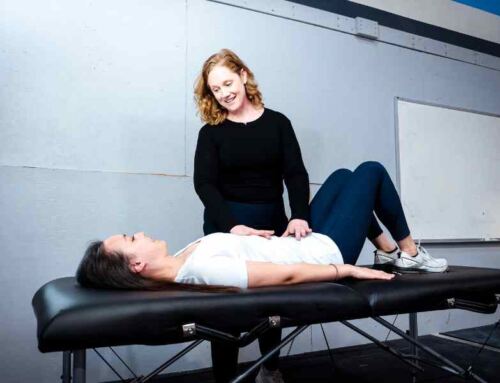Why Should You Consider Physical Therapy for Interstitial Cystitis?
If you are experiencing bladder pain, frequent urination, or pelvic discomfort, physical therapy might be a key part of finding relief. Physical therapists are uniquely trained to help manage conditions like interstitial cystitis (IC), which can significantly impact your quality of life. According to the American Urology Association (AUA), manual physical therapy should be offered to patients with IC who have pelvic floor tenderness. In fact, physical therapy is one of the most effective treatments available for managing symptoms of IC (Clemens et al., 2022).
But what exactly is interstitial cystitis? Let’s break it down.
What is Interstitial Cystitis?
Interstitial cystitis (IC), also known as painful bladder syndrome (PBS), is a chronic condition that causes bladder pain or pressure, pelvic pain, as well as associated symptoms such as persistent urinary urgency and frequency.
Symptoms can vary in severity and often significantly impact a person’s quality of life. Importantly, Because IC is chronic in nature, IC is diagnosed in the absence of an active infection, with symptoms typically lasting for more than six weeks.
Common Symptoms of Interstitial Cystitis
While the symptoms and severity of symptoms vary between individuals with IC, common symptoms include:
- Bladder Pain: A persistent pain in the bladder or abdominal region, often worsening as the bladder fills and easing after urination.
- Frequent Urination: A constant need to urinate, similar to a UTI, but without an active infection.
- Pelvic Pain: Pain extending beyond the bladder to areas like the lower back, pelvic floor, and buttocks (Trip et al., 2012).

What Causes Interstitial Cystitis?
The exact cause of IC is unknown, but there are some factors that may contribute (Clemens et al., 2022):
- Bladder Wall Abnormalities: Approximately 10-15% of patients with IC have Hunner’s lesions that can contribute to increased irritation of the bladder lining. These patients are often over the age of 50. Other inflammatory changes can occur which increase overall inflammation of the bladder lining.
- Autoimmune disease
- History of allergies
- Recent history of infection (but no longer present upon urinalysis)
- History of chronic disorder (such as IBS or Fibromyalgia)
How is Interstitial Cystitis Diagnosed?
Diagnosing IC can take time. Doctors often rule out other conditions, like active bladder infections or cancer, before diagnosing IC. Given that this condition is chronic in nature, an individual would likely have had symptoms for greater than six weeks if not longer.
In some cases a doctor may recommend a cystoscopy to gain a deeper insight on what is happening at the tissue level of the bladder. This thorough approach helps guide effective treatment for patients with IC.
Treatment Options for Interstitial Cystitis
More common frontline treatment options for patients with IC may include approaches such as:
- Diet Modifications: According to the NIH, “avoiding coffee, soda, alcohol, tomatoes, hot/spicy foods, chocolate, caffeinated beverages, citrus juices, and drinks, msg and high acid foods can help to alleviate IC symptoms.”
- Medications: Pain relievers and anti-inflammatories are common for managing symptoms.
- Physical Therapy: Pelvic floor physical therapy can help address muscle tension and dysfunction in the pelvic region that contributes to pain.
- Hydrodistension: This procedure involves stretching the bladder with fluid under anesthesia, which can sometimes help relieve symptoms in certain presentations.
How Can Physical Therapy Help Interstitial Cystitis?
Pelvic Health Physical Therapists are specially trained to address pelvic floor dysfunction. This can include reducing muscle tension, treating trigger points, and educating patients on how the pelvic floor impacts their pain. Up to 85% of IC patients have pelvic floor dysfunction and myofascial pain (Gupta et al., 2015).
Physical therapy is designed to help you feel more comfortable, reduce pain, and improve your quality of life. If you’re managing interstitial cystitis or unsure where to start, physical therapy is an effective and evidence-backed option to help you find relief with a personalized plan that addresses your specific needs.
References
- Clemens JQ, Erickson DR, Varela NP, Lai HH. Diagnosis and Treatment of Interstitial Cystitis/Bladder Pain Syndrome. Journal of Urology. 2022 Jul 1; 208 (1): 34-42. https://doi.org/10.1097/JU.0000000000002756
- Interstitial cystitis/painful bladder syndrome. National Institute of Diabetes and Digestive and Kidney Diseases. https://www.niddk.nih.gov/health-information/urologic-diseases/interstitial-cystitis-painful-bladder-syndrome
- Gupta P, Gaines N, Sirls LT, Peters KM. A multidisciplinary approach to the evaluation and management of interstitial cystitis/bladder pain syndrome: an ideal model of care. Transl Androl Urol. 2015 Dec;4(6):611-9. doi: 10.3978/j.issn.2223-4683.2015.10.10. PMID: 26816861; PMCID: PMC4708537.
- Tripp DA, Nickel JC, Wong J, et al. Mapping of pain phenotypes in female patients with bladder pain syndrome/interstitial cystitis and controls. Eur Urol; 2012;62:1188-94.








